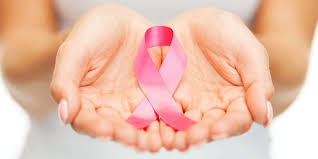 From Specialised Health’s Exercise Physiologist Jennifer Smallridge:
From Specialised Health’s Exercise Physiologist Jennifer Smallridge:
The relationship between exercise and breast cancer prevention and survivorship have been well researched, but here is a snapshot of the most up-to-date evidence in the field.
1. Exercise boosts mental processing speed.
With or without chemotherapy, many breast cancer survivors report a decline in brain function which affects memory, thinking and concentration. A 2017 study2 from the San Diego School of Medicine found that incorporating 12 weeks of regular exercise showed more than double the improvements in cognitive processing speed than that of the control group.
2. Exercise alters tumour gene expression.
Emerging research3 presented at the San Antonio Breast Cancer Symposium in 2016 have confirmed what has been found in animal studies for years – exercise in humans changes the genetic makeup of tumour cells. Study participants in the exercise intervention showed upregulation in cytokine gene expression (responsible for cell death), and downregulation of RNA transport and DNA replication (responsible for tumour growth).
3. Exercise prevents the risk of cardiovascular disease in this population.
For women with non-metastatic breast cancer, cardiovascular disease is the leading cause of death. 2016 research4 from the Journal of Clinical Oncology has found that regular exercise results in a substantial reduction in the incidence of cardiovascular events, coronary artery disease and heart failure.
4. Exercise is vital during chemotherapy.
Being physically active during chemotherapy for early-stage breast cancer improves fitness, quality of life, chemotherapy completion rate, and disease-free survival5. The dose-response relationship for this important stage of treatment appears to be the more exercise the better, with one trial5 finding that outcomes were optimised with 3 x 60 minute sessions per week. 2016 research5 also highlighted the need for motivation from healthcare professionals at this time, resulting in higher compliance and increased satisfaction around the exercise program.
While ongoing research breakthroughs continue to explain the causes behind these anti-cancer mechanisms, the main thing is that women feel supported and encouraged to remain physically active during and beyond a breast cancer diagnosis.
Exercise is an essential part of managing breast cancer but employing the most effective strategies to encourage patients to move and maintain activity is perhaps the most important step.
Motivational interviewing, wellness coaching and cognitive behavioural therapy are all techniques that skilled professionals are able to employ to help with overcoming the many barriers that women experience to being active and often a joint approach between physical and psychological-based professionals is the best way to get the ball rolling.
If you have a customer with breast cancer who is reporting concerns with fatigue, energy levels, cognition, sleep disturbance or just a general lack of conditioning, consider recommending a physical conditioning program as, like we’ve seen, the results can be amazing!
More info:
McGrath Foundation
Breast Cancer Network Australia
Make sure to hit “Like” and follow our Facebook page here to get some more insights into what an Exercise Physiologist is and what we do
AND of course if you’d like to make a referral for Exercise Physiology services go ahead and click here
1. Australian Government. (2017). October, Australia’s Breast Cancer Awareness Month. Cancer Australia. Retrieved 23 October 2017, from https://canceraustralia.gov.au/healthy-living/campaigns-events/breast-cancer-awareness-month
2. Galindo, Y. (2017). Brain Powered: Increased Physical Activity Among Breast Cancer Survivors Boosts Cognition. UC San Diego News Center. Retrieved 23 October 2017, from http://ucsdnews.ucsd.edu/pressrelease/brain_powered_increased_physical_activity
3. Ligibel, J. A., Irwin, M., Dillon, D., Barry, W., Giobbie-Hurder, A., Frank, E., … & Brown, M. (2017). Abstract S5-05: Impact of pre-operative exercise on breast cancer gene expression.
4. Jones, L. W., Habel, L. A., Weltzien, E., Castillo, A., Gupta, D., Kroenke, C. H., … & Yu, A. (2016). Exercise and risk of cardiovascular events in women with nonmetastatic breast cancer. Journal of Clinical Oncology, 34(23), 2743-2749.
5. Courneya, K. S., Segal, R. J., Vallerand, J. R., Forbes, C. C., Crawford, J. J., Dolan, L. B., … & McKenzie, D. C. (2016). Motivation for Different Types and Doses of Exercise During Breast Cancer Chemotherapy: a Randomized Controlled Trial. Annals of Behavioral Medicine, 50(4), 554-563.


